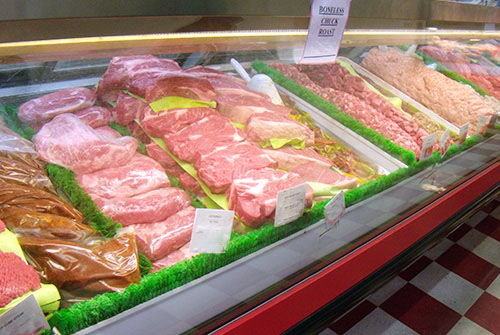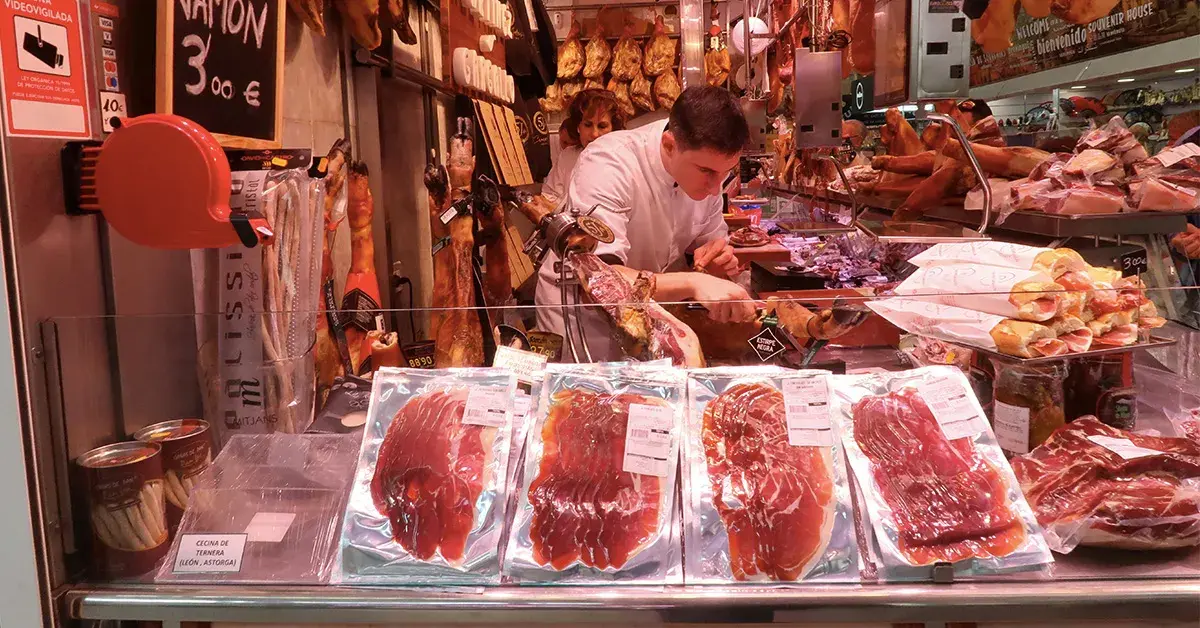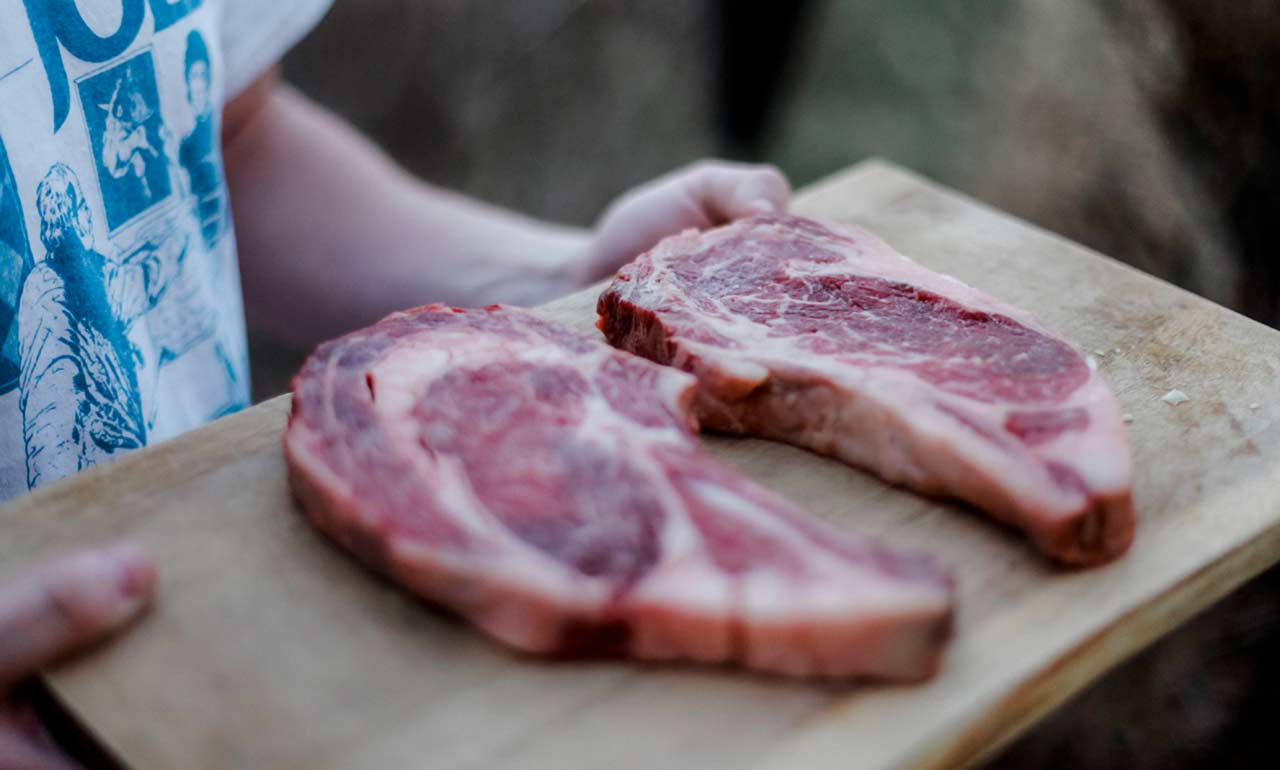Why Residents Love Bagley Farms Meat Market Edwardsville IL for Their Meat Buying
Why Residents Love Bagley Farms Meat Market Edwardsville IL for Their Meat Buying
Blog Article
Reveal the Art of the Butcher's Cut in a Modern Meat Market
In the ever-evolving landscape of modern-day meat markets, the butcher's cut has actually transcended its typical origins, merging olden craftsmanship with modern techniques. What genuinely sets the contemporary butcher apart is their capacity to forge a deeper link between consumers and the beginnings of their meat.
Evolution of Butchery Strategies

The mid-20th century saw butchery strategies further improved by clinical understandings into muscular tissue biology and meat aging, enhancing both inflammation and taste. Technologies like vacuum product packaging and refrigeration extended item shelf-life, permitting butchers to branch out offerings and enhance quality assurance. This period also noted the increase of specific equipment, such as band saws and meat slicers, which boosted accuracy and efficiency in meat handling.
The 21st century has actually introduced digital technology into the butchery world. Digital systems now help in monitoring animal provenance and enhancing cuts to meet specific client choices. Furthermore, a revival in artisanal butchery has actually arised, mixing typical skills with contemporary expertise to cater to customers seeking honest and lasting meat alternatives. This development emphasizes a vibrant interaction in between tradition and development, conference modern needs while maintaining the craft's heritage.

Understanding Meat Cuts

Recognizing the details of meat cuts is essential for both butchers and customers looking for top quality and worth. For butchers, precise cuts mirror skill and respect for the craft, making sure minimal waste and optimum yield.
The primary groups of meat cuts consist of primal, sub-primal, and retail cuts. Primitive cuts, such as the loin, rib, and chuck, are the huge areas at first divided from the carcass. Butchers after that break these down better into sub-primal cuts, prior to lastly creating retail cuts available to customers, like ribeye or tenderloin. Each phase needs careful focus to physiological structure and muscular tissue composition.
Comprehending muscular tissue composition is critical; muscles utilized extra often by the animal often tend to be tougher and are best suited for sluggish food preparation methods, while less-used muscles, like those found in the loin, are more tender and perfect for grilling or roasting. Experience with these distinctions empowers customers to make informed choices, enhancing their culinary ventures.
Choosing Top Quality Meat
Choosing the appropriate meat includes more than just picking a visually appealing piece from the display. The art of choosing high quality meat needs a discerning eye and understanding of particular features that represent quality and excellence.
Secondly, take into consideration the marbling, which refers to the white streaks of fat within the muscle mass. Correct marbling is a key sign of inflammation and flavor, as it melts throughout food preparation, improving the meat's juiciness. Keep in mind, greater marbling frequently associates with superior quality cuts, such as USDA Prime.
Appearance is another essential aspect; meat needs to really feel strong to the touch, not slimy or overly soft. Furthermore, be mindful of the fragrance. Fresh meat needs to have a tidy, neutral odor, free from any kind of sour or off-putting odors.
Matching Cuts With Cooking Methods
Effectively combining cuts of meat with the suitable food preparation approaches is necessary for accomplishing optimum flavor and structure. Various cuts differ in tenderness, marbling, and connective cells material, each calling for specific methods to unlock their capacity. Tender cuts like filet mignon and ribeye, with their fundamental marbling, advantage from high-heat, quick-cooking techniques such as cooking or pan-searing. These methods improve the meat's natural flavors and make sure a juicy coating.
On the other hand, tougher cuts like brisket and chuck roast see post are abundant in collagen, which breaks down into gelatin when cooked slowly. These cuts are suitable for braising or slow-moving roasting, permitting the meat to soften with time and develop deep, intricate tastes. Likewise, cuts such as short ribs and pork shoulder get on well with slow-cooking techniques, where prolonged cooking times transform their robust textures right into succulent meals.
Lamb shanks and oxtail, which require prolonged food preparation to soften, are excellent candidates for stewing or slow-moving simmering. These methods coax out rich, passionate tastes while maintaining dampness. By recognizing the special attributes of each cut, chefs and home cooks alike can boost their cooking creations, ensuring each recipe is both satisfying and unforgettable.
The Butcher's Duty Today
Browsing the developing landscape of the modern meat market, the butcher's role today extends past plain preparation of cuts. Contemporary butchers are cooking craftsmens, educators, and supporters for sustainable techniques. They bridge the find void in between the farm and the fork by ensuring moral sourcing, understanding pet husbandry, and prioritizing openness in the supply chain. This change shows the expanding consumer need for quality over amount, where provenance and animal well-being are critical.
In addition to crafting precise cuts, butchers now involve directly with consumers, providing cooking suggestions and tailoring choices to match individual requirements and preferences. Their proficiency in meat aging, marbling, and flavor accounts equips customers to make educated choices, enhancing their culinary experiences. This customized service exhibits the butcher's advancing role as a relied on advisor in the kitchen area.
Furthermore, butchers are essential in minimizing description waste, utilizing whole animals to develop varied products such as sausages and stocks - bagley farms meat market edwardsville il. This thorough strategy not only respects the animal however likewise lines up with modern sustainability objectives. By doing this, the contemporary butcher symbolizes both practice and technology, adjusting to an ever-changing market while preserving the artistry and integrity of their craft

Final Thought
Proficiency in understanding varied meat cuts and quality indications equips butchers to give informed suggestions, straightening particular cuts with optimum cooking methods. By recognizing historic methods while embracing modern needs, the butcher's function stays vital in today's innovative meat market.
Report this page